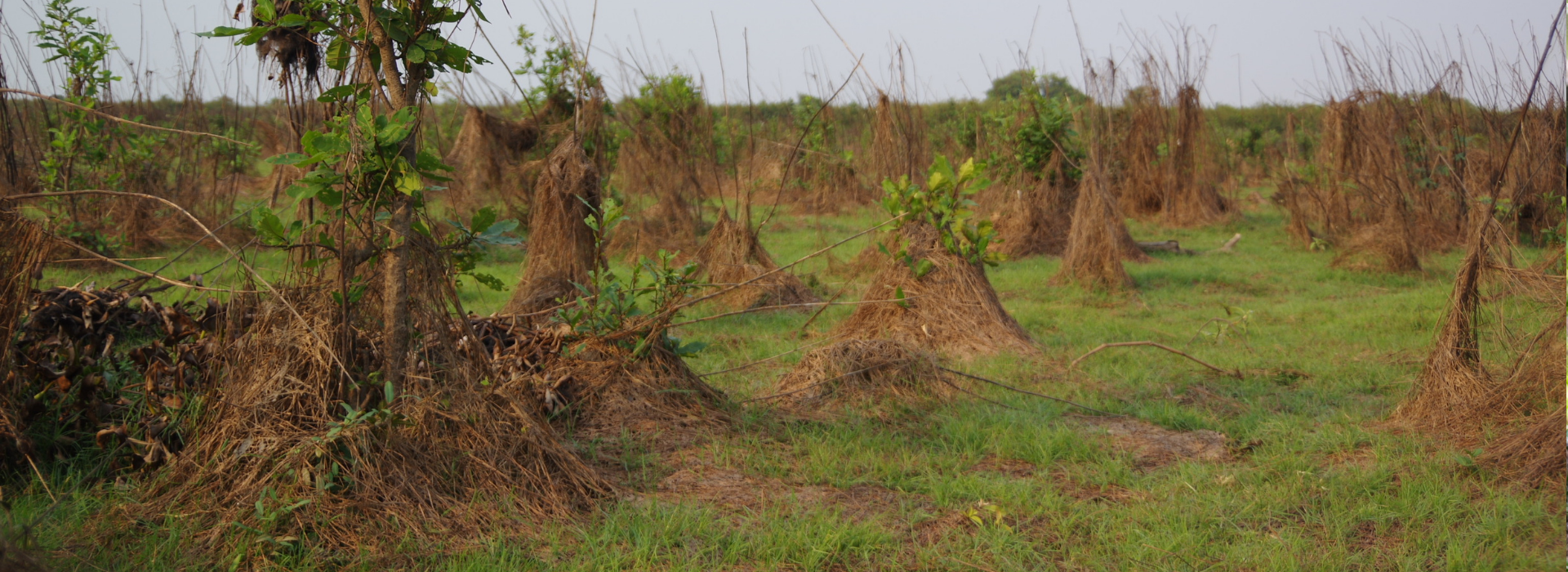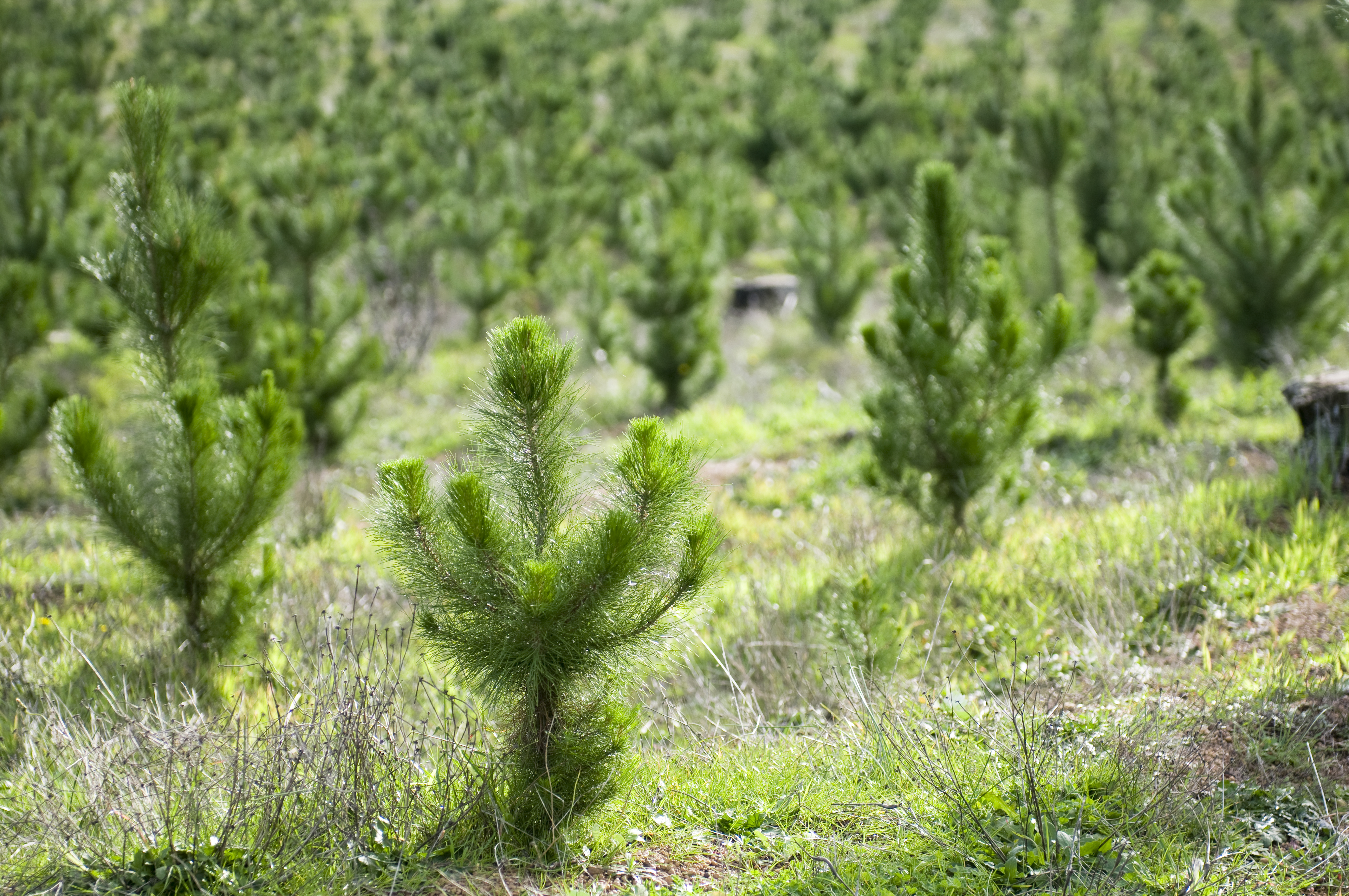In Cambodia, planting trees can save the fish
April 21, 2022 | By Alexandra Kirkman
For centuries, thousands of Cambodian families have lived and worked in floating villages on Tonle Sap — the largest freshwater lake in southeast Asia. Generations of men and women there spend their days gliding through the muddy waters to check their fishing nets. The country depends on their hard work: The 500,000 tons of fish they yield in a typical year provide more than two-thirds of the protein in Cambodians’ diet.
But some of those nets have been increasingly empty lately.
The combined effects of deforestation, climate change, upstream hydropower dams and overfishing have dramatically reduced the region’s fish populations over the past few years. And over the past couple of decades, fires and agricultural clearing have decimated large swaths of Tonle Sap’s once-lush array of lakeshore trees, which support all kinds of aquatic life.
These deforested sites have been colonized by Mimosa pigra — locally known as “giant’s thorn” — an invasive shrub that endangers the fish population. Loss of these gallery forests has also meant less shade for residents during the scorching dry season and exposes their floating homes to potentially devastating storm-driven wind and waves during the wet season.
To protect Tonle Sap and regrow its gallery forest, many fishing families in the beating heart of the Mekong River system are now collecting seeds and nurturing seedlings, then planting them along the lake’s edge at the onset of the wet season.

A child plants a seedling at a replanting event in a former rice field near Tonle Sap. (Photo credit: Tangkor Dong/Conservation International)
These efforts are part of Conservation International’s initiative to restore flooded gallery forest in Cambodia’s Kampong Thom and Pursat provinces, which border the lake. In partnership with local community fisheries, this global environmental nonprofit aims to restore 219,980 trees across 1,260 acres, while sustainably supporting a crucial $2 billion fishing industry.
Conservation International is one of two environmental nonprofits guiding landscape restoration strategy for Mastercard’s Priceless Planet Coalition, a consortium of more than 100 organizations combating climate change and global deforestation. The coalition’s goal is to restore 100 million trees by 2025 in at-risk areas worldwide, and earlier this week announced Tonle Sap would be among 15 new projects across six continents.
“Tonle Sap is one of the world's most productive freshwater fisheries, and it’s under significant stress,” says Nick Souter, freshwater manager for Greater Mekong at Conservation International, which has worked in Tonle Sap since 2008. “The locals understand that if you destroy the forest, you won’t have any fish. That's what's driving them to want to protect it.”
The Tonle Sap reforestation initiative contributes to an increasingly urgent global mission to combat climate change by curbing carbon emissions and restoring natural landscapes. The need is especially important in Cambodia, because it ranks high among countries most vulnerable to climate change due to its low-lying and flood-prone geography — with the forest wall gone, there’s nothing to protect the Tonle Sap floating homes from strong winds and big waves — and high reliance on agriculture, forestry and fisheries. Projects like this one can help ensure Tonle Sap remains a lifeline for the Cambodian people.
“While pressures on the lake system like climate change and dam development are strong and growing, they can be solved,” Souter says. “Our philosophy for working with these communities is to improve local environmental conditions as much as possible to build resilience to these external threats.”
The Tonle Sap forest restoration effort involves entire communities. In addition to planting seedlings, locals assist with natural regeneration in areas where fishermen cut down trees to use as net poles. Community members patrol for illegal activity and erect sign boards that discourage felling immature trees.

Conservation International is working with Keng Sreymom and other women to make Tonle Sap's fisheries more sustainable, including supplying them with fuel-efficient stoves to smoke their fish. (Photo credit: Kriya Sith/Conservation International)
Conservation International also established a fish-processing project designed to boost the earning power of women in Pursat province. The project trains women to produce high-quality fermented fish — including prahok, a fish paste that’s a Cambodian pantry staple — and smoked fish using fuel-efficient stoves that take half the time and half the amount of local firewood.
Keng Sreymom, 36, who lives with her aunt in one of the floating villages on Tonle Sap, joined one of the women’s fish processing groups in 2013. “Before joining the group, I used a time-consuming and dangerous traditional fish-smoking stove,” she says. “It was an open design, which required constant attention to stop the fire from spreading and burning my wooden home.”
The project also provides the women with hygiene and sanitation training for fish processing, storage and transport to market, along with marketing and small business development training. It also connected to her to new markets in Phnom Penh, where she was able to get better prices — double for her prahok and about 30% higher for the smoked fish — putting less strain on the lake and its fisheries.
In the future, Tonle Sap’s forest restoration efforts hold potential for carbon financing. Companies seeking to offset their greenhouse gas emissions would buy carbon credits designed to the benefit of community fisheries.
“Improving fishers’ livelihoods creates resilience in these communities,” Souter says. “So hopefully, when hard times come, they won’t need to exploit their natural resources.”
Banner image: A forest is taking root once again in an area of Tonle Sap that had been cleared for rice cultivation. The mounds at the base of the trees are dried aquatic grass that accumulated during annual floods, where the waters would have reached about 13 feet high. (Photo credit: Nick Souter/Conservation International)

story
A seed is just the start
Successful tree-planting efforts require a deep understanding of an ecosystem, how people use the land and what species work best there. Experts from Conservation International and World Resources Institute explain how to ensure forest restoration campaigns have impact.
Read more